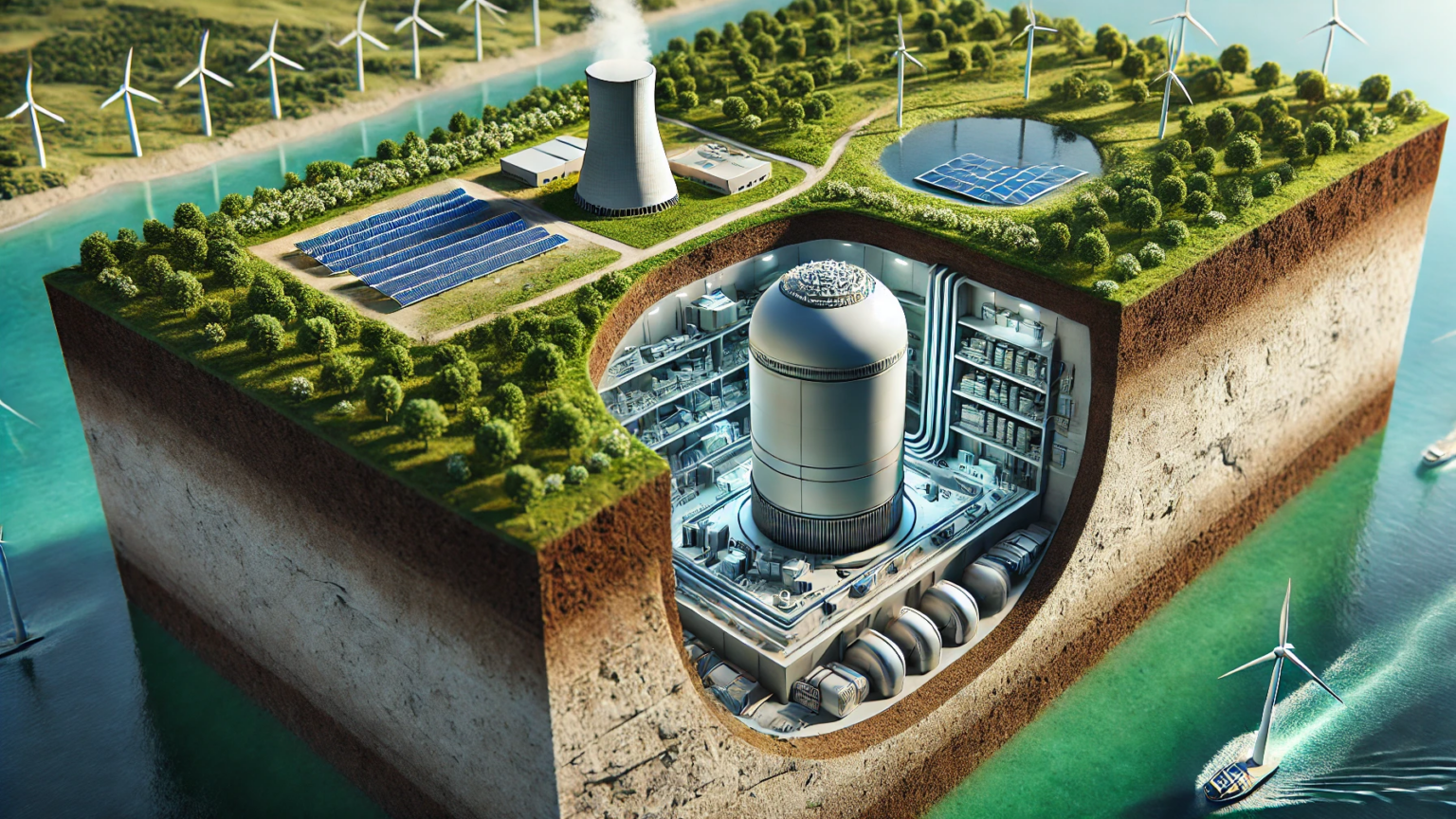It is widely known that the world is moving in the direction of green energy sources. Advancements in research are being made across more than just the wind, solar, and geothermal industries. Recently, two advancements in the production, storage, and transportation of hydrogen gas have been announced.
Using hydrogen as an energy source is more favorable than many other “green” energy sources because the only byproduct of using hydrogen is water. With advancements in technology and processes, hydrogen gas could very well be the future energy.
The Problems With Current Hydrogen Storage and Transportation
Currently, the transportation and storage of hydrogen are expensive and dangerous. It comes with many challenges, and it is very energy intensive to compress the gas into a liquid for transportation. This has been inhibiting the growth of the hydrogen industry and makes using the gas in widespread applications, such as vehicles, not so environmentally friendly or safe.
- There are three methods of hydrogen storage:
- In high-pressure tanks as a compressed gas
- In dewars or tanks as a liquid that must be kept at -253℃
- As a solid in metals or chemical compounds through chemical reactions or absorption
Traditional methods of hydrogen transportation require the gas to be compressed into a liquid using specialized cryogenic equipment that is very expensive and energy intensive. The transportation of liquid hydrogen is also very dangerous and requires costly safety measures, which impedes the practicality of using hydrogen gas in a number of applications. Typically, liquid hydrogen is transported globally on specially built cryogenic cargo ships.
What if we had a safer, more energy efficient, and simpler method of transporting and storing not only hydrogen gas but other gases as well? These are just the thoughts of several researchers around the world who have been working to make this concept a reality. Significant advancements are being made, and the research is showing promising results and a whole lot of potential for practical everyday applications.
Hydrogen Gas in a Powder?
When you think of gases, the last thing you probably think of is a powder. However, by finding ways to store hydrogen gas in a stable powder, we can create practical, safe, and energy-efficient solutions to the transportation and use of hydrogen as an energy source for everything from powering our homes and vehicles to providing an energy source to manufacturing processes. This could significantly reduce our emissions and carbon footprint worldwide.
In the past few months, two breakthroughs in the storage and production of hydrogen gas have been announced. The first is the ability to successfully trap hydrogen gas in a stable powder, a process developed at Deakin University. The other is a porous silicon compound called Si+ that creates hydrogen gas through a chemical reaction with water. Both offer the promise of a point of use method for the generation of hydrogen gas for energy.
Here is a closer look at these two revolutionary powders and how they are changing the energy industry.
The Deakin University Method
This new, innovative method of storage was developed by two Australian scientists from the Institute for Frontier Materials at Deakin University. These nanotechnology scientists created a mechanochemical process in which they can achieve gas separation and storage using a mechanical method called ball milling while utilizing precise pressure levels of gases.
In simple terms, they put a powder, in this case, boron nitride, in a rotating cylinder containing steel balls. By introducing hydrogen gas at precise pressure levels while the steel balls and powder are being rotated through the process of ball milling, they were able to trigger a reaction in which the powder absorbs the gas.
This process allows for a solid-state storage medium that can safely hold gases at room temperature until they are needed. When the gas is needed, the loaded powder can simply be heated to a certain point, releasing the hydrogen. The process is repeatable, and the boron nitride powder retains most of its storage capacity after each time it is used, making the process economical.
Other powders can be used as well. According to the scientists, graphene powder works as a storage medium too, and they are looking into ways to clean the powders and restore their absorption capacity. Other powders that are more abundant and cheaper may work too, but the research is still in its infancy, and much is left to be learned.
The Economic Viewpoint
This process is proving viable for the separation of hydrocarbon gases from crude oil using a fraction of the energy needed in today’s process. In fact, it could use less than 10% of the energy that is currently required.
In order to separate hydrocarbon gases from crude oil, the petrol industry uses a ‘cryogenic distillation’ process. This process uses a huge amount of energy to cool the gases into a liquid and then slowly heat them back up. Since each gas evaporates at its own temperature, they are able to collect individual gases separately as they gradually increase the temperature.
The ball milling process could do the same thing just as effectively but without the need for huge amounts of energy. The scientists at Deakin University found that they could separate different gases by using different milling intensities, time periods, and gas pressures. Basically, they have a set of parameters that they run to extract a certain gas into the powder. The powder is then removed and replaced, and the process started over with a new set of parameters for a different gas.
Essentially, they are able to absorb gases one by one from a mixture into stable powders that can be held at room temperature. There is no need for dangerous pressurized tanks or expensive cryogenic equipment.
Some Potential Drawbacks of Hydrogen Powder
While this process may take a bit more time than our current methods, the energy and emissions savings make it something worth pursuing.
Another obstacle is the weight-to-volume factor. Right now, for every gram of powder, the storage potential of hydrogen is 0.065 grams, which is equivalent to about 0.11 liters of compressed hydrogen gas. Additionally, for every kilogram of hydrogen you are transporting, you would need 14.4 kilograms of powder. This is a bit more than lugging around compressed hydrogen in which, for every kilogram of hydrogen, you would need a 9-kilogram tank. To add to that, the powder would still need its own container and heat-release system. But the energy and emissions savings gained in the beginning still make this a viable solution for the storage and transportation of hydrogen gas.
Additionally, when we look at the specialized cargo ships need to transport liquid hydrogen, the process is even more appealing. By having hydrogen gas stored in a stable powder, we could then possibly transport it on a traditional cargo ship, which would take up a fraction of the space and allow other goods to be transported at the same time. This would further reduce emissions.
The Si+ Powder
EPRO Advance Technology (EAT), a renewable energy company, has developed a porous silicon material called Si+. Rather than storing hydrogen gas in a powder, the Si+ powder can be mixed with water to create hydrogen gas at point of use. The Si+ powder itself can be created using a renewable energy source and metallurgic-grade silicon that can be made from sand or extracted from crushed-up recycled solar panels and other electronics.
This advancement could be huge. It is not only solving the problem of producing hydrogen gas with practically no carbon footprint but also keeping electronics and solar panels from reaching our landfills. The Si+ powder is safe and easy to transport. All one must do is mix the powder with water at any temperature above 32℉. The only thing that is left after the process is silicon dioxide which can then be used to make concrete.
Like the Daiken University powder, the Si+ powder would weigh more than current methods of hydrogen storage and transportation, but it would take up much less space. Additionally, the fact that the entire process from start to finish has the potential to have zero waste and zero emissions provides a strong case for widespread use of the material.
Passing Green Gas to Our Future Generations!
While both of these processed materials have huge potential, there is still much research, fine-tuning, and cost analysis that needs to be done before either can be widely adopted and implemented. But this is a step in the right direction to helping to reduce our impact on the environment while also creating a safer workplace for all involved in the production and transportation of hydrogen gas.
The International Energy Agency (IEA) believes that the time is right to explore hydrogen’s potential to create a global clean hydrogen economy.
“Hydrogen is today enjoying unprecedented momentum. The world should not miss this unique chance to make hydrogen an important part of our clean and secure energy future.” Dr. Fatih Birol – Executive Director of the International Energy Agency.
With the cost of renewable energy sources such as wind and solar panels (photovoltaics), the promise of green hydrogen production on an industrial scale is within sight. The US Department of Energy (DOE) is investing $100 million into green hydrogen and fuel cell research and development. By 2030 The European Union will invest $430 billion in green hydrogen to reach its “Green New Deal” goals in a renewable energy future. Mission Innovation, a global initiative representing over 90% of global public investments in clean energy innovation, is investing in the technologies to increase the cost competitiveness of clean hydrogen with a goal of reducing the end-to-end cost to $2.00/kg by 2030.
At Noah Chemicals, our experts understand portable transport systems for hydrogen generation. We are currently collaborating with companies that are investigating new and innovative methods to produce substantial amounts of point of use hydrogen generation very efficiently and with a small footprint.
We look forward to seeing more advancements in the use of hydrogen powder and other methods to achieve a green future and are eager to facilitate the process.
For more information about how Noah Chemicals can assist you with the hydrogen powder formulations and innovations, please contact our Noah Chemicals Services team here or call us at (888) 291-1186.




